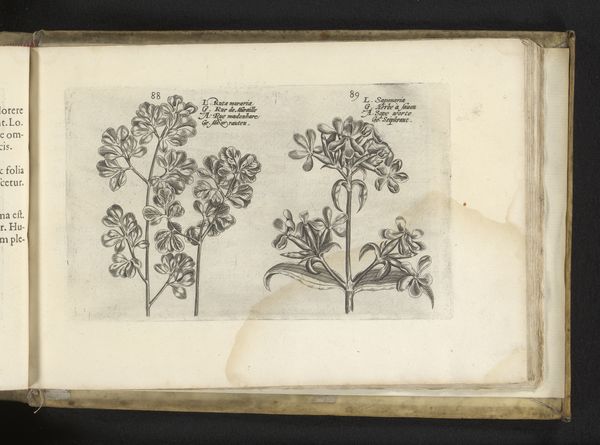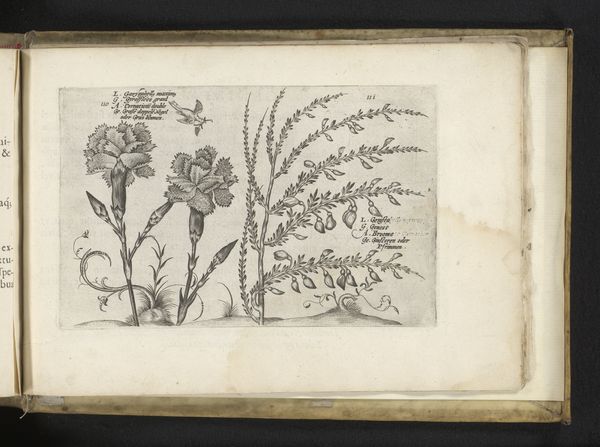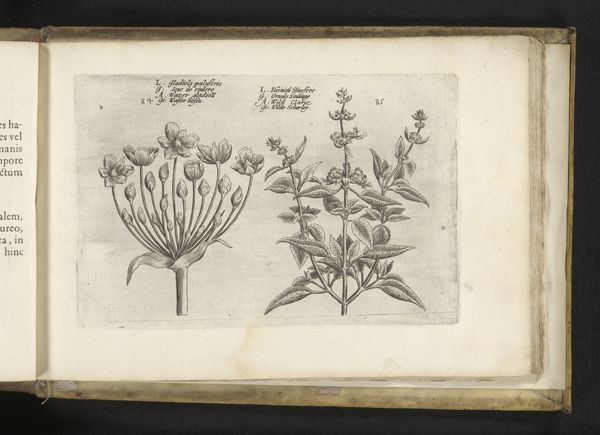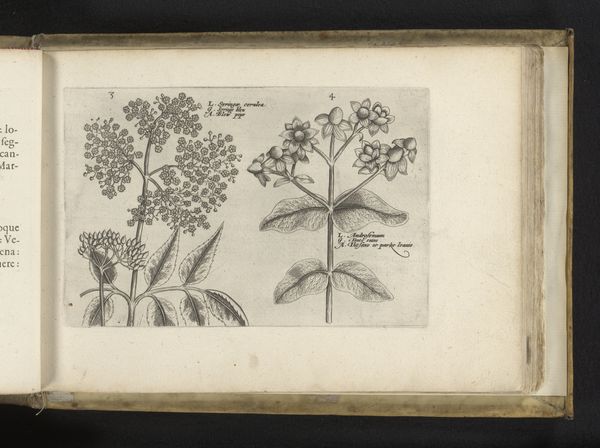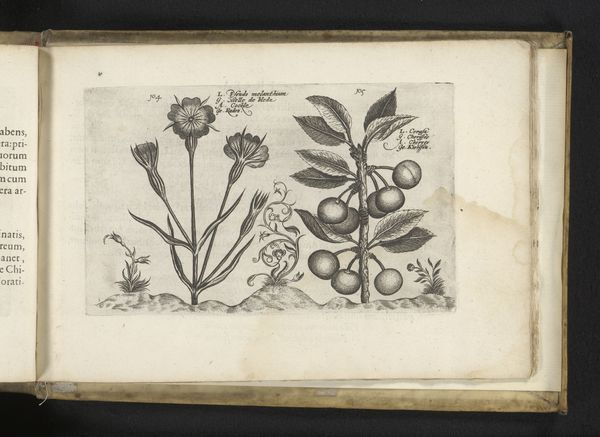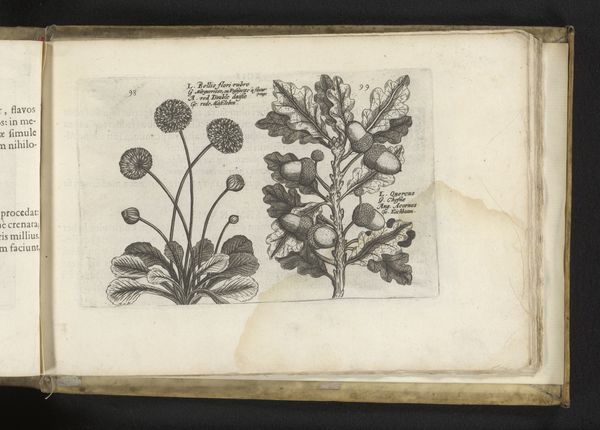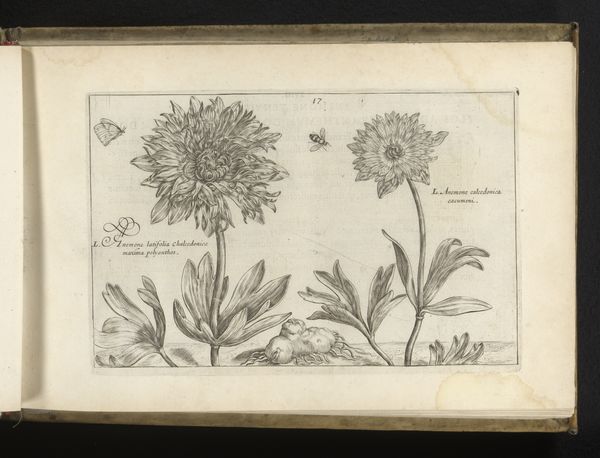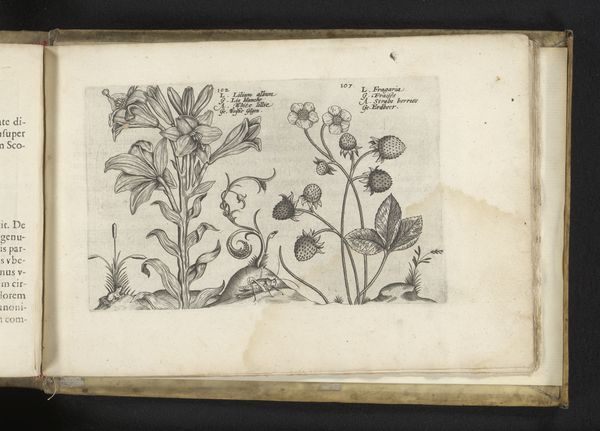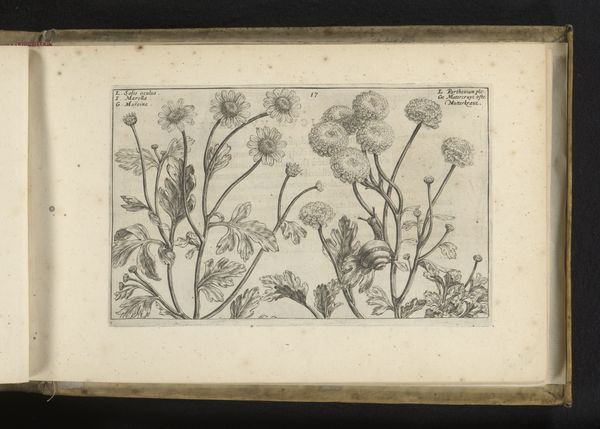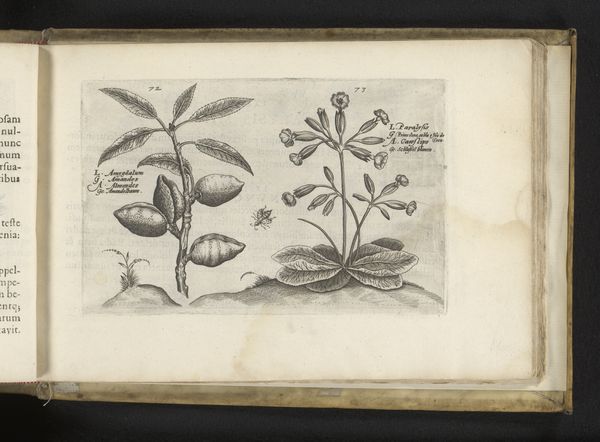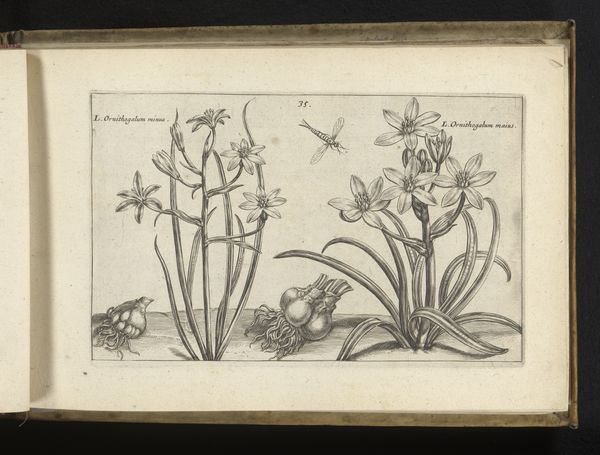
drawing, print, paper, ink, engraving
#
drawing
#
aged paper
#
toned paper
#
light pencil work
# print
#
sketch book
#
flower
#
paper
#
personal sketchbook
#
ink
#
pen-ink sketch
#
pen and pencil
#
line
#
pen work
#
sketchbook drawing
#
history-painting
#
northern-renaissance
#
sketchbook art
#
engraving
#
realism
Dimensions: height 129 mm, width 185 mm
Copyright: Rijks Museum: Open Domain
This botanical illustration by Crispijn van de Passe the Younger, made around the mid-17th century, presents us with meticulously rendered depictions of plants, including lijmkruid and hulst. Within the cultural context of the time, plants were often imbued with symbolic meanings, reflecting both medicinal and spiritual properties. Consider the holly, or hulst. Its evergreen nature has long been associated with immortality and protection, a motif stretching back to pre-Christian winter solstice celebrations. The plant's sharp leaves symbolize defense and resilience, while its red berries evoke associations with blood, life, and vitality. In the visual lexicon of various cultures, we find parallels—thorny plants guarding sacred spaces, fruits representing fertility and renewal. The persistence of such symbols, their subtle mutations across time and geography, speaks to a collective memory, a shared subconscious that finds expression in art. The holly’s ability to evoke a sense of both danger and sustenance engages us on a primal level, connecting us to ancient rituals. The cyclical return of winter and the enduring presence of evergreen plants mirror life’s own rhythms of death and rebirth.
Comments
No comments
Be the first to comment and join the conversation on the ultimate creative platform.
